2018 下半年教师资格考试小学英语面试真题及答案
小学英语 听说
考题解析
【教案】
Teaching aims:
Knowledge aim:
Students can master the words: doctor, zoo, and hospital
Ability aim:
�
Students can improve their skills of listening and speaking.
Emotional aim:
Students can be more interested in taking part in activities and know how to deal
with the emergency..
Key and difficult point:
Key Point:master the words: doctor, zoo, and hospital and understand the main topic
of this dialogue.
Difficult Point: know how to deal with the emergency in daily life.
Teaching procedure:
Step 1: Warming-up
1. Greetings.
2. Ask students where they went last weekend.
3. Ask students “did you meet any emergency when you had the plan”
Step 2: Pre- listening
1. Draw some pictures to teach about the words: doctor, zoo, and hospital
2. Let students guess what the main topic of passage according to the title
Step 3: While-listening
First listening: check the prediction of main topic of the dialogue and ask”what
are they talking about”
�
Second listening: what’s the matter of Sarah? and what is about his feeling?
Third listening: read after the tape.
Step4: Post-listening
Set a situation: if you meet this situation, what should you do? and if your friend
meet this situation and he calls you for help. What will you say?
Step5: Summary and Homework
Summary: ask a student to conclude the content of the lesson and summarize with the
whole class.
Homework: ask students to practice the sentence structure learned today with desk
mates after class.
Blackboard design:略
小学英语 语音
�
考题解析
【教案】
Teaching aims:
Knowledge aim:
Students will master the meaning and pronunciation of the word.
Ability aim:
�
Students will know how to pronounce “-er” in words.
Emotional aim:
Students will be interested in learning English.
Key and difficult point:
Key Point:
Students will master the meaning and pronunciation of the word.
Students will know how to pronounce “-er” in words.
Difficult Point:
Students will be interested in learning English.
Teaching procedure:
Step 1: Warming-up
1. Greetings.
2. Sing a song Finger Family.
Daddy finger, daddy finger, where are you?
Here I am, here I am, how do you do?
Mommy finger, mommy finger, where are you?
Here I am, here I am, how do you do?
Ask them if they know the name of the song. Then may guess it is Finger Family. Then
�
tell them that we are going to learn some pronunciation in “finger”.
Step 2: Presentation
1. Use some riddles to introduce the words. For example, “I will drink it every
day. What is it? Yes, it’s water.” Then draw the according pictures(introduce
“sister” by explaining its meaning). And write the words at last.
2. Ask the students to read the words after the teacher for twice. Then play high
and low voice. If the teacher speak one word loudly, the students should speak it
lowly, and vice versa.
3. Ask students to find similarities among the words. They may say that they all
contain“-er”at the end of the words. Then introduce the rules of the pronunciation.
4. Ask students if they know other words containing “-er”. They may say “winter”,
“river” or others.
Step 3: Practice
1. Finish Read, underline, and say in the textbook. Check answers, and ask students
to read after the teacher.
2. Finish Look, listen and write in the textbook. Then invite students share their
answers on the blackboard. Give encouragement.
Step4: Production
1. Ask students to make up a chant using the words we learned. For example:
Water, water, tiger likes water.
Sister, sister, sister likes computer.
�
Dinner, dinner, let’s have dinner.
Step5: Summary and Homework
Summary: ask a student to conclude the content of the lesson and summarize with the
whole class.
Homework: chant for the students’ parents.
Blackboard design:略
�
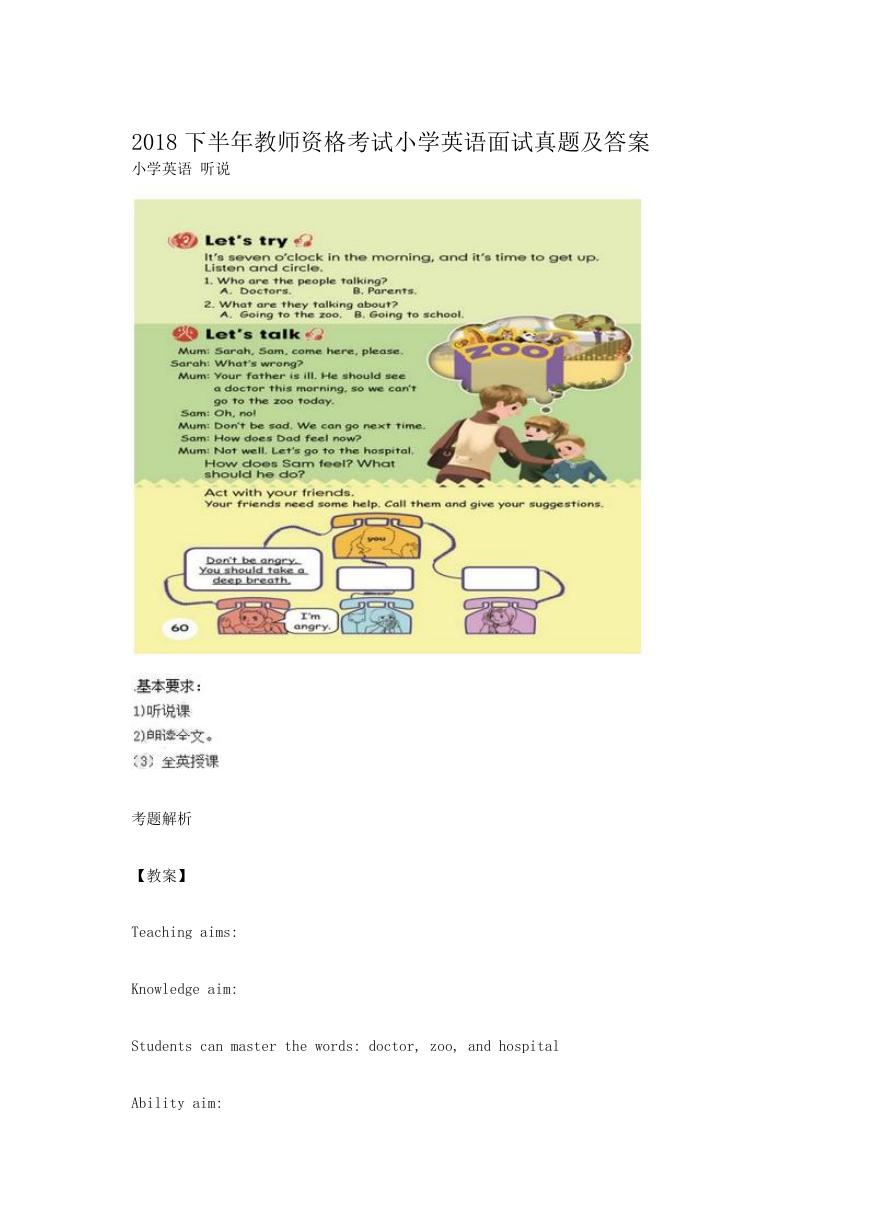
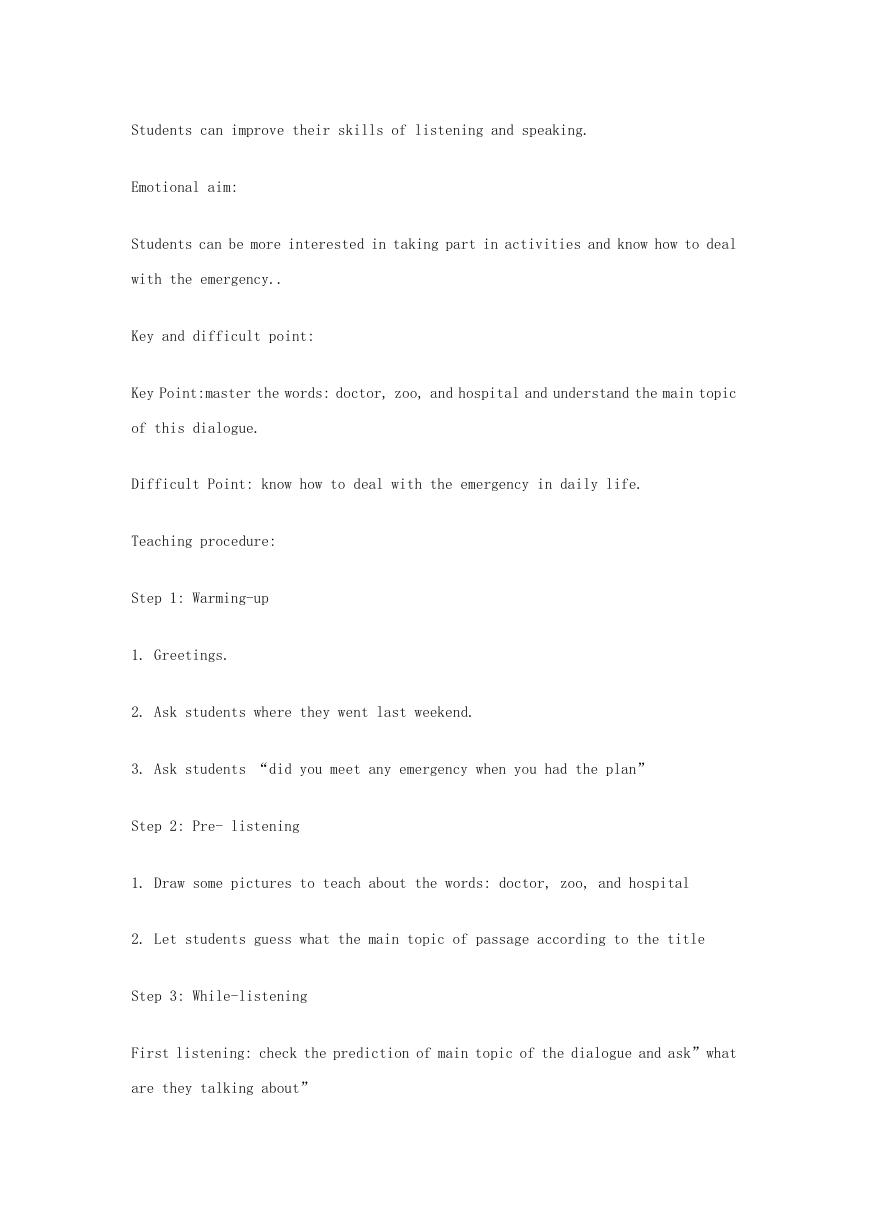
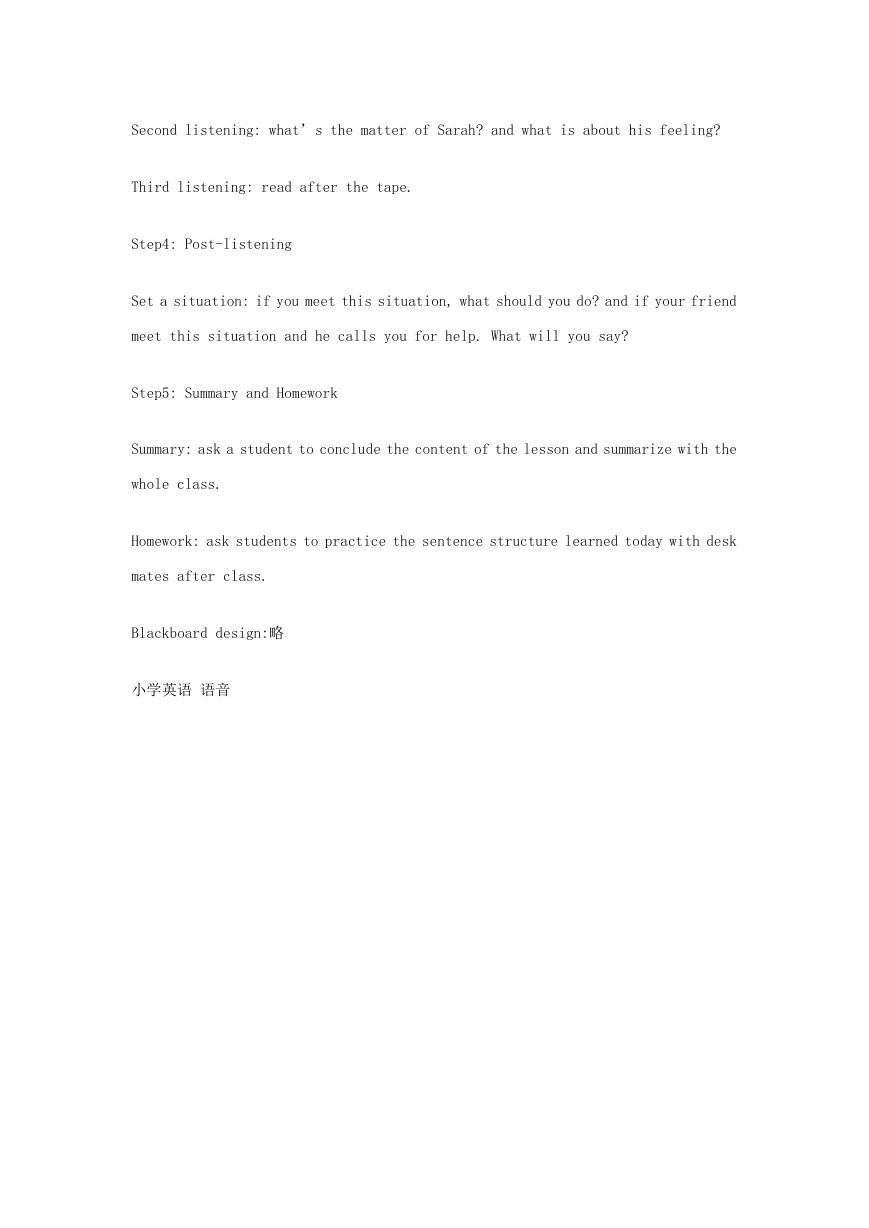
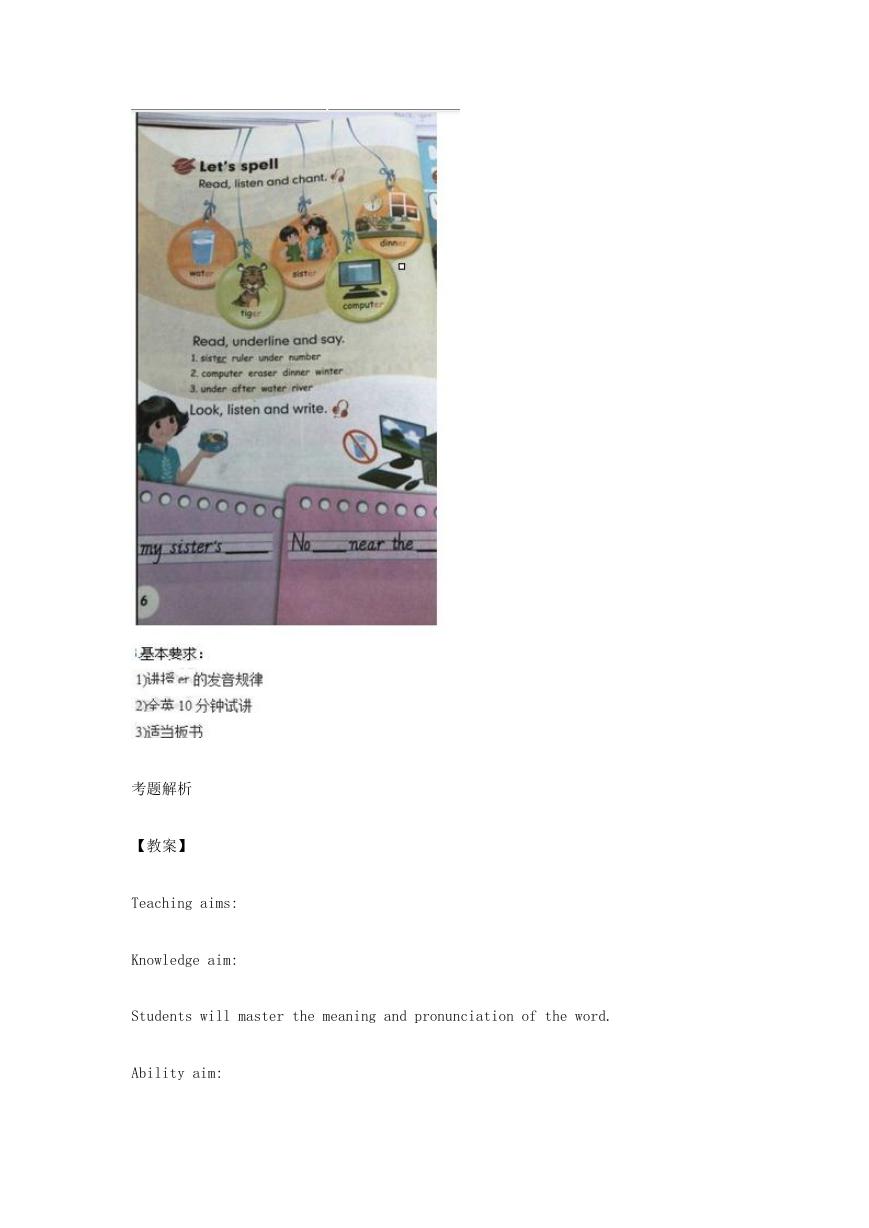
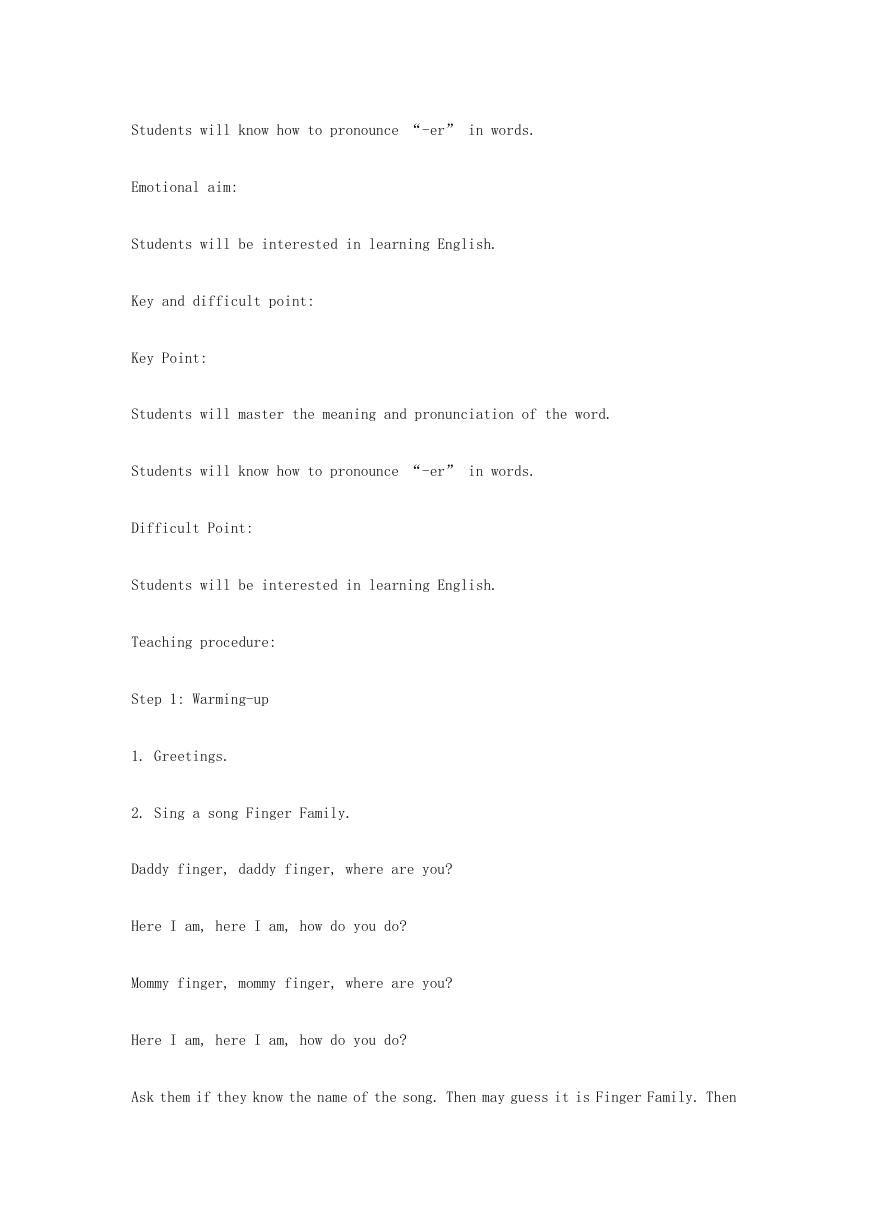









 2023年江西萍乡中考道德与法治真题及答案.doc
2023年江西萍乡中考道德与法治真题及答案.doc 2012年重庆南川中考生物真题及答案.doc
2012年重庆南川中考生物真题及答案.doc 2013年江西师范大学地理学综合及文艺理论基础考研真题.doc
2013年江西师范大学地理学综合及文艺理论基础考研真题.doc 2020年四川甘孜小升初语文真题及答案I卷.doc
2020年四川甘孜小升初语文真题及答案I卷.doc 2020年注册岩土工程师专业基础考试真题及答案.doc
2020年注册岩土工程师专业基础考试真题及答案.doc 2023-2024学年福建省厦门市九年级上学期数学月考试题及答案.doc
2023-2024学年福建省厦门市九年级上学期数学月考试题及答案.doc 2021-2022学年辽宁省沈阳市大东区九年级上学期语文期末试题及答案.doc
2021-2022学年辽宁省沈阳市大东区九年级上学期语文期末试题及答案.doc 2022-2023学年北京东城区初三第一学期物理期末试卷及答案.doc
2022-2023学年北京东城区初三第一学期物理期末试卷及答案.doc 2018上半年江西教师资格初中地理学科知识与教学能力真题及答案.doc
2018上半年江西教师资格初中地理学科知识与教学能力真题及答案.doc 2012年河北国家公务员申论考试真题及答案-省级.doc
2012年河北国家公务员申论考试真题及答案-省级.doc 2020-2021学年江苏省扬州市江都区邵樊片九年级上学期数学第一次质量检测试题及答案.doc
2020-2021学年江苏省扬州市江都区邵樊片九年级上学期数学第一次质量检测试题及答案.doc 2022下半年黑龙江教师资格证中学综合素质真题及答案.doc
2022下半年黑龙江教师资格证中学综合素质真题及答案.doc